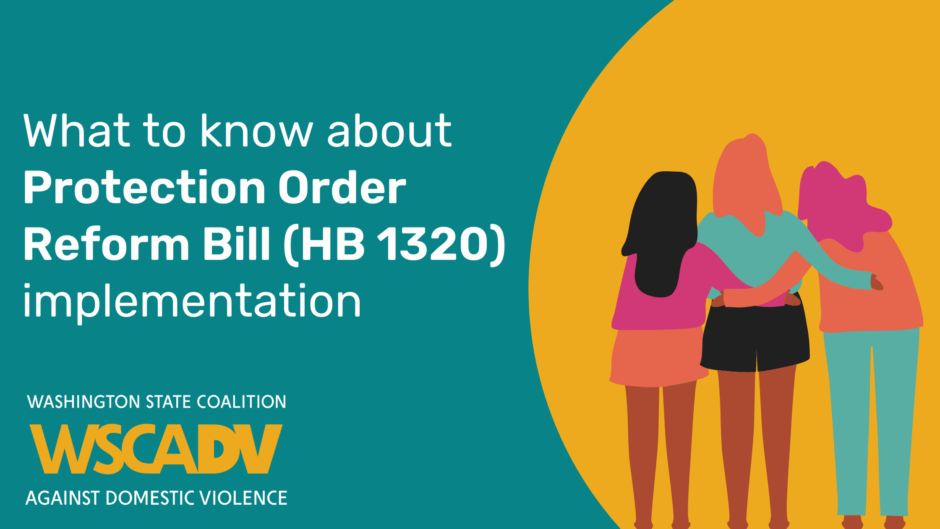
Last legislative session E2SHB 1320 was passed to modernize and harmonize civil protective orders in Washington State. This bill contains many updates to existing protection order- including revisions to laws regarding possession of firearms and allowing hearings to be conducted both in-person and remotely.
This post provides brief overview of the section of the bill that went into effect earlier this year. The remaining sections go into effect on July 1, 2022. You can read the full bill text as passed here.
Sections that went into effect July 22, 2021:
- Section 12- Administrative Office of the Courts (AOC) and Gender and Justice Commission must develop jurisdictional recommendations, due 12/1/21
- Section 16- Duties assigned to AOC related to filing and data collection. This includes updating forms, creating informational brochures and creating a standard petition, due 6/30/22
- Section 18- Service options
- Section 25- Remote hearings
- Section 36- AOC and Gender and Justice Commission must convene a workgroup and make recommendations for improving protective orders. Most recommendations due 12/1/21
There are important updates for advocates to know about Sections 18 and 25.
Section 18: Methods for Service
This section details updated guidelines for service, including guidelines for electronic service. These options apply to all orders including petitions, temporary orders and reissuances.
When is Personal Service still required?
- Extreme risk protection order
- When an order involves surrender of firearms
- When transfer of children from petitioner to responder or a transfer of custody is involved
Electronic Service Guidelines
- Email, text message, social media application and “other technologies” are permitted
- Must be done by law enforcement, except when petitioner chooses to have another person who is not involved in the petition do it
- Not allowed in the following instances: surrender of firearms, transfer of custody, vacating a respondent from a shared residence, when respondent is incarcerated
- After the actions above take place- future service can be done electronically
Service by mail
- Permitted when electronic service is not possible AND two attempts at personal service are not successful
- Should be ordered by the court without petitioner filing a motion
Service by publication
- This is a last resort and only permitted when all other options have been exhausted or there is no known physical address or electronic means
Section 25: Remote Hearings
This section provides details about remote hearings, including various duties the court must carry out in offering remote hearings including security considerations and communicating with parties appearing remotely. It should be noted that while allowing remote attendance in now written into the law, it is still “in the court’s discretion” when to allow it.
Things to keep in mind:
- Remote appearance can happen via telephone, video or “electronic means” and must be requested 3 days prior to the hearing
- Hearings are not allowed to be streamed or posted online unless waivers are received from all parties or no in-person option for attendance is being offered to the public. If there is no in-person option of attendance for the public, then online streaming may exist.
You can find new and updated forms, including forms addressing the changes to service and remote hearings listed above here.
As always, feel free to reach out to Heather Wehr, Legal Advocacy Program Coordinator heather@wscadv.org with any questions.